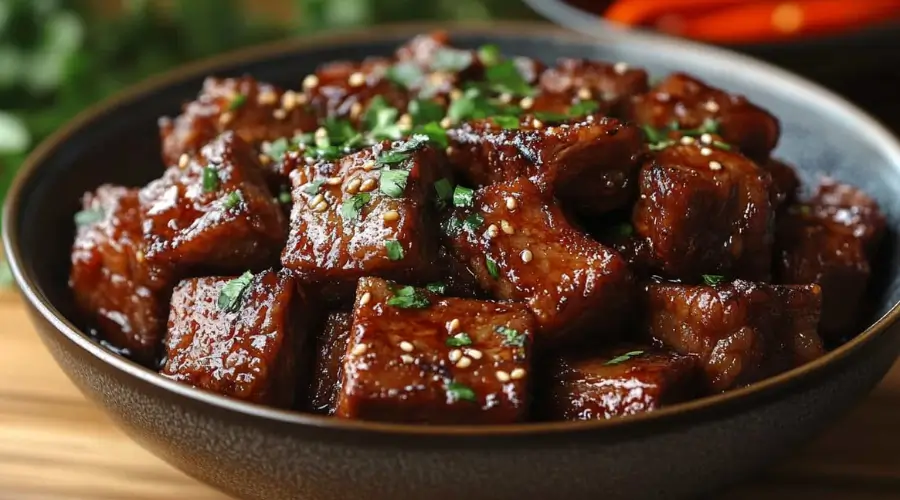The rich aroma of star anise and cinnamon mingles with the savory scent of beef simmering in a glossy sauce. This is Chinese braised beef – a dish that transforms tough cuts of meat into fork-tender morsels swimming in a sauce so good you’ll want to drizzle it over everything on your plate.If you’re a fan of deeply flavorful, traditional beef dishes, you might also be captivated by our Taiwanese Beef Noodle Soup: A Bold Taste of Tradition.
My first taste of authentic Chinese braised beef came from a tiny restaurant tucked away in a bustling food market. The owner, an elderly woman with hands that moved with practiced precision, had been making this dish for over 40 years. One bite, and I understood why customers lined up daily – the meat practically melted in my mouth while the complex sauce hit every flavor note from sweet to savory to subtly spiced.
Today, I’m sharing a recipe that brings those same incredible flavors to your kitchen, with techniques that make this traditionally time-consuming dish accessible even on a weeknight. Whether you choose the traditional braising method or speed things up with a pressure cooker, you’ll achieve restaurant-quality Chinese braised beef that will have everyone asking for seconds.
Table of Contents
Why You’ll Love Chinese Braised Beef
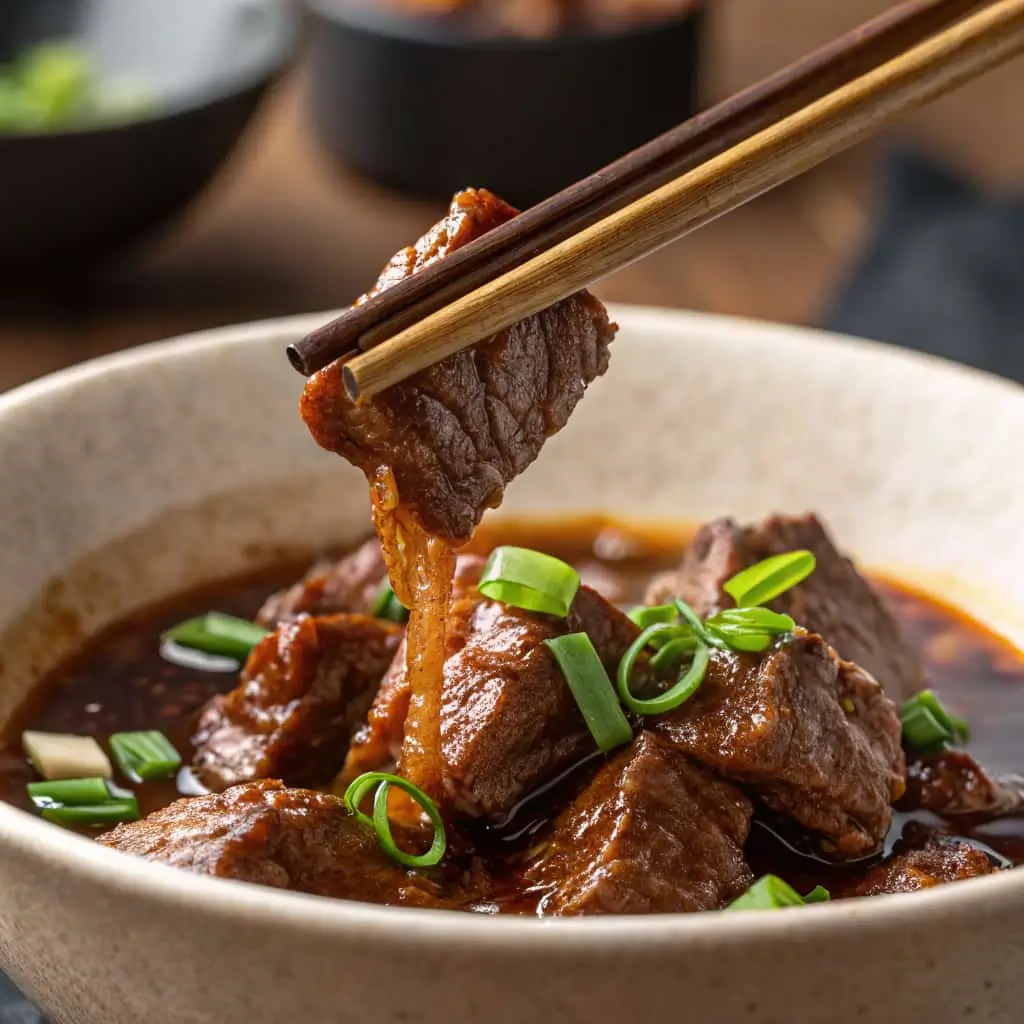
Incredibly Tender Meat
Chinese braised beef delivers that coveted “fall-apart” texture that makes each bite a pleasure. Through the magic of low, slow cooking (or the speed of pressure cooking), tough connective tissues break down into rich gelatin, creating meat so tender you can pull it apart with chopsticks. For another take on achieving incredibly tender results, check out our Ultimate Braised Beef Recipe (Slow Cooked, Fall-Apart Tender). This transformation is why Chinese chefs often choose economical, flavorful cuts like beef finger meat or boneless beef ribs – these “working” muscles have more flavor and become incredibly tender with proper cooking.
Rich, Complex Flavors
Unlike simple stews, Chinese braised beef features a sophisticated flavor profile built in layers. The foundation begins with aromatic ginger and green onion, deepens with aged ShaoHsing wine, and gains complexity from the interplay between light and dark soy sauce. A touch of rock sugar rounds everything out, helping create that signature glossy sauce that clings beautifully to the meat. The result is a dish with remarkable depth that balances sweet, savory, and aromatic notes perfectly.
Versatile Serving Options
This dish effortlessly transitions from casual family dinner to impressive entertaining. Serve it simply over steamed rice to soak up the delicious sauce, pair it with hand-pulled noodles for a traditional presentation, or offer it as part of a larger spread of Chinese dishes. The leftovers (if there are any!) taste even better the next day as the flavors continue to develop overnight.
Make-Ahead Friendly
Chinese braised beef actually improves with time, making it perfect for busy cooks. Make it a day ahead, refrigerate, and the flavors will meld and deepen overnight. This also allows you to easily remove any solidified fat from the surface before reheating, resulting in a cleaner-tasting final dish. Learn more about the science behind meat tenderization during braising from Serious Eats’ Food Lab.
Ingredients for Chinese Braised Beef Recipe
The Best Cuts of Beef for Braising
The star of this dish is undoubtedly the beef, and selecting the right cut makes all the difference. Beef finger meat (also called “beef fingers”) is a traditional choice that comes from between the ribs. This well-marbled cut delivers outstanding flavor and becomes exceptionally tender when braised.
Don’t worry if you can’t find beef finger meat at your local market. Several excellent alternatives work beautifully:
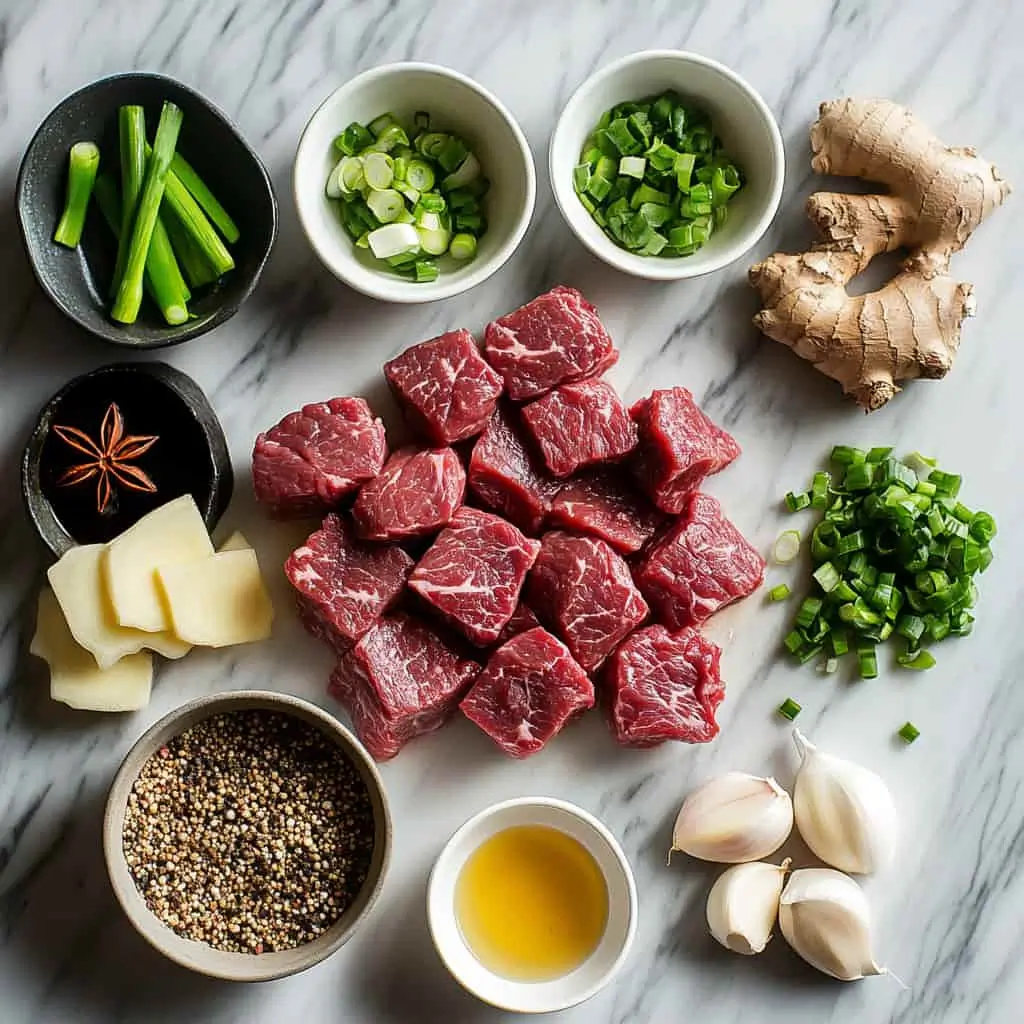
- Chuck roast: Affordable, widely available, and full of flavor
- Boneless beef ribs: Rich and well-marbled
- Beef shank: Gelatinous and deeply flavored
- Brisket point: Fatty and flavorful
Look for meat with good marbling (thin white streaks of fat within the muscle) which will melt during cooking, keeping the meat moist and adding richness to the sauce.
Essential Chinese Aromatics and Seasonings
The aromatic foundation of Chinese braised beef includes:
- Ginger: Use thick slices with the skin on to impart flavor without disintegrating
- Green onions: Both white and green parts serve different functions
- Garlic: Whole cloves add subtle flavor
- Star anise: The distinctive licorice-like flavor is essential
- Cinnamon stick: Adds warmth and complexity
- Bay leaves: Provides subtle herbal notes
Discover more about traditional Chinese spices and aromatics at Woks of Life’s Chinese ingredients glossary.
Liquid Components
These critical ingredients create the braising liquid that will transform into your sauce:
- ShaoHsing wine: This aged Chinese rice wine adds complexity and depth. It’s worth seeking out at Asian markets, but dry sherry makes a reasonable substitute in a pinch.
- Light soy sauce: Provides saltiness and umami
- Dark soy sauce: Contributes deep color and slight sweetness
- Rock sugar: Traditional Chinese kitchens use this crystallized sugar to create a glossy sauce without overwhelming sweetness. Regular sugar or even honey can substitute, though the texture will differ slightly.
Ingredient Substitutions
Don’t let missing ingredients stop you from making this dish:
- No ShaoHsing wine? Use dry sherry or even a dry white wine.
- Rock sugar unavailable? Brown sugar provides similar depth, though use about 25% less.
- Can’t find dark soy sauce? Use regular soy sauce with a tiny drop of molasses.
How to Make Chinese Braised Beef Recipe
Preparation Steps
- Cut your beef into large 2-inch chunks – this keeps the meat from drying out and makes for more dramatic presentation.
- Soak the beef in cold water for 30 minutes, then drain thoroughly. This step draws out excess blood and results in a cleaner-tasting final dish.
- Prepare your aromatics: slice ginger, trim green onions into 2-inch segments, and lightly crush garlic cloves.
For video tutorials on proper knife skills and meat preparation techniques, visit America’s Test Kitchen’s cooking school.
Traditional Braising Method
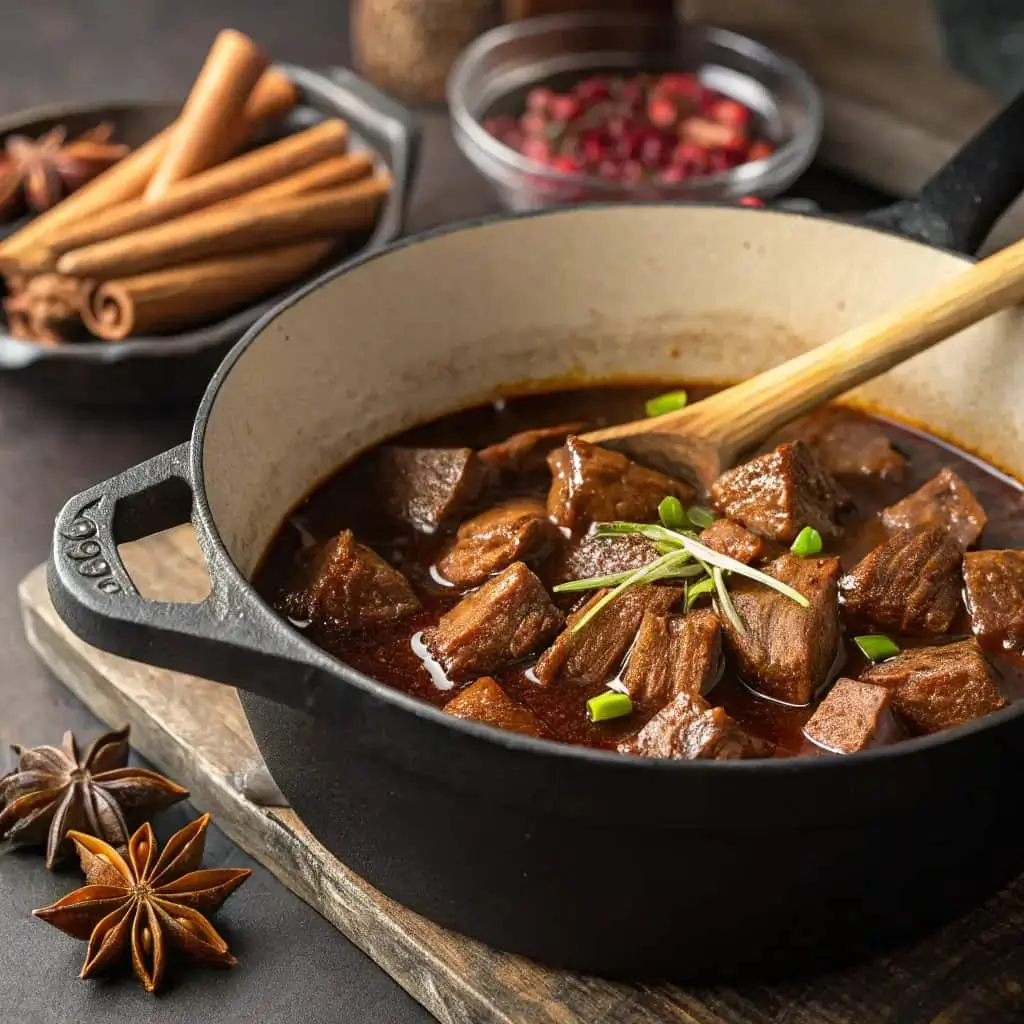
- Heat 2 tablespoons of neutral oil in a heavy-bottomed pot or Dutch oven over medium-high heat.
- Working in batches to avoid crowding, brown the beef chunks on all sides until golden (about 2 minutes per side). Transfer to a plate.
- In the same pot, add ginger, green onion whites, and garlic. Stir-fry for 30 seconds until fragrant.
- Pour in ShaoHsing wine, scraping up any browned bits from the bottom of the pot.
- Return the beef to the pot along with light and dark soy sauce, rock sugar, star anise, cinnamon stick, and bay leaves.
- Add enough water to just barely cover the beef.
- Bring to a boil, then reduce heat to maintain a gentle simmer. Cover and cook for 1.5-2 hours, until the beef is tender when pierced with a fork.
- Remove the lid and increase heat to reduce the sauce until it coats the back of a spoon, about 15-20 minutes.
Pressure Cooker Method
For busy weeknights, the pressure cooker delivers remarkable results in a fraction of the time:
- Follow steps 1-4 from the traditional method, using your pressure cooker’s sauté function.
- Add all remaining ingredients and secure the lid.
- Cook under high pressure for 35 minutes (for chuck or finger meat) or 45 minutes (for beef shank).
- Allow natural pressure release for 15 minutes, then carefully release any remaining pressure.
- If the sauce needs thickening, use the sauté function to reduce it uncovered until it reaches your desired consistency.
Achieving the Perfect Sauce
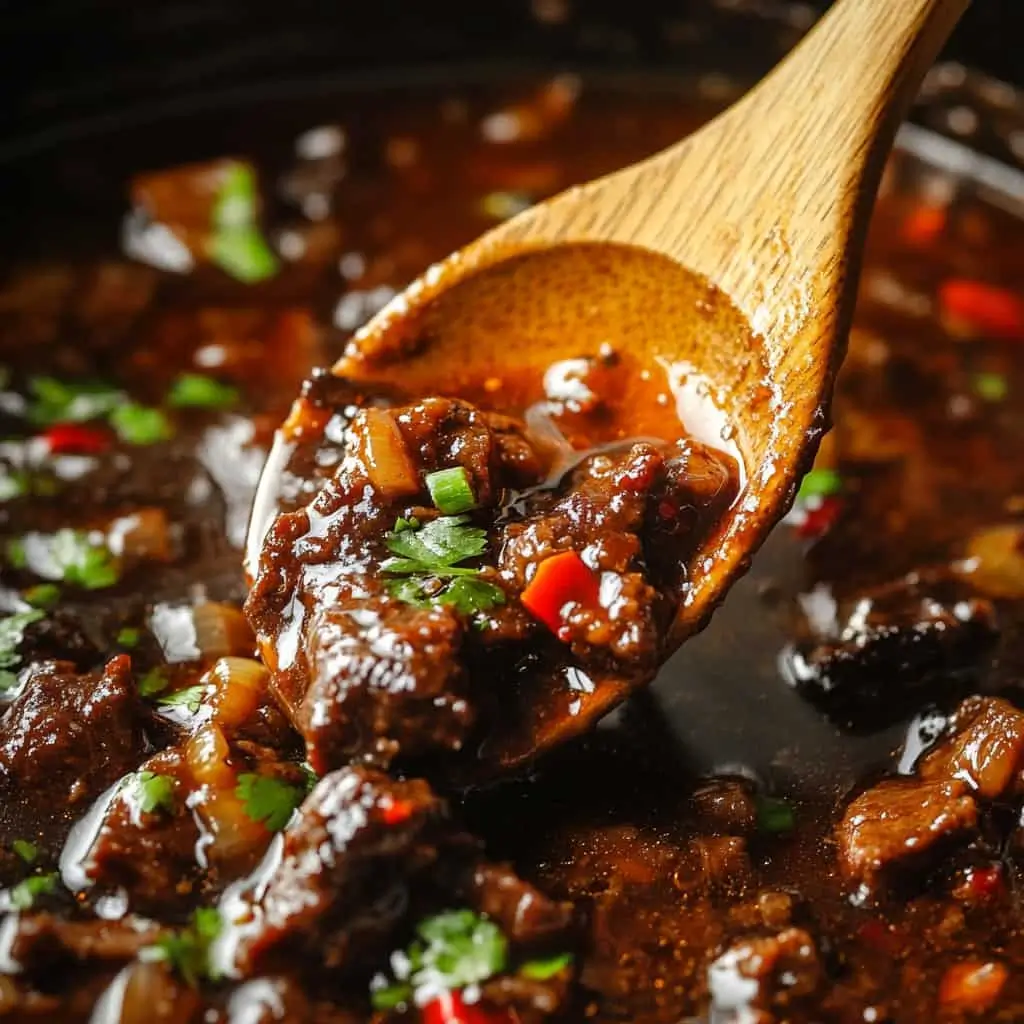
The hallmark of excellent Chinese braised beef is a sauce with the perfect consistency – not too thin or too thick, but glossy and rich enough to cling to the meat. Here’s how to perfect it:
- If your sauce is too thin after cooking, remove the meat and increase heat to medium-high, simmering uncovered until reduced.
- For a silkier texture, mix 1 teaspoon of cornstarch with 1 tablespoon of cold water and stir into the simmering sauce.
- Taste and adjust with a splash more soy sauce for saltiness or a pinch of sugar for sweetness.
Finishing Touches
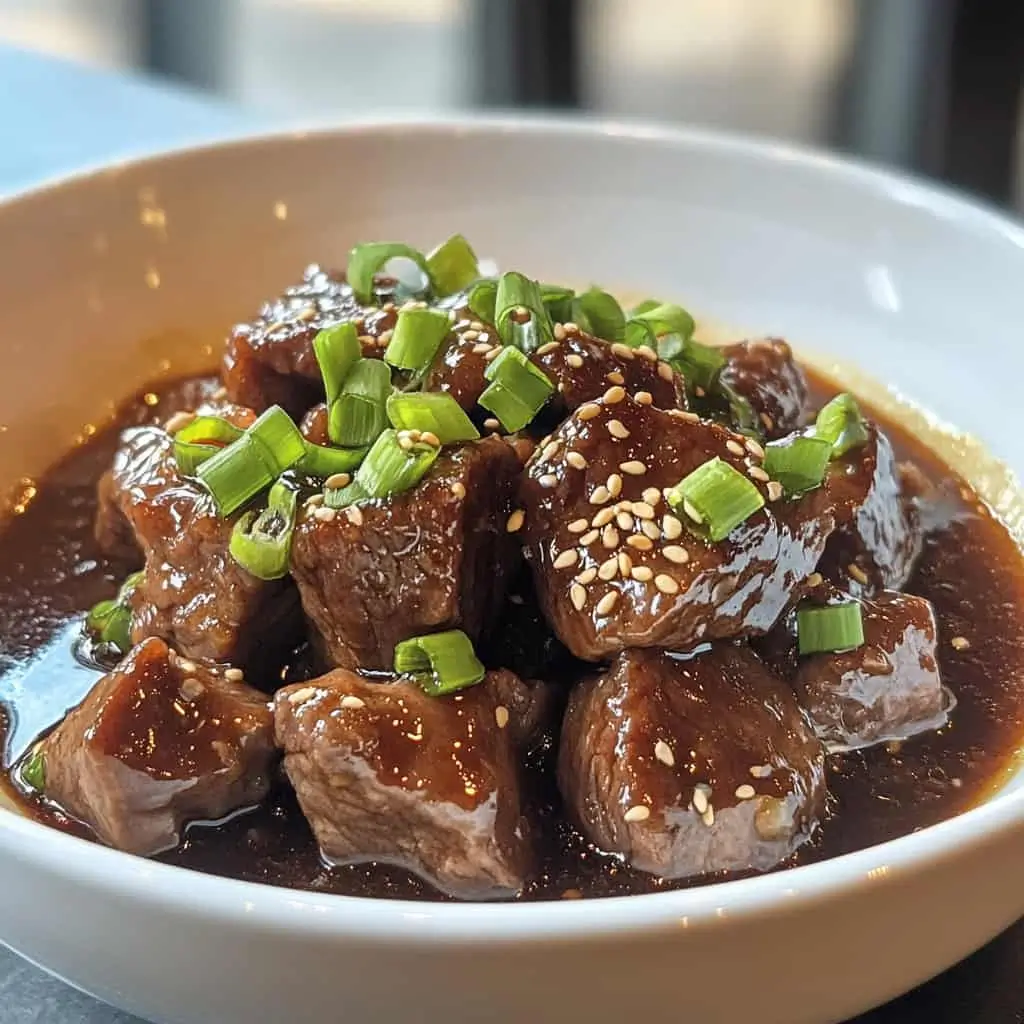
Before serving, remove the whole spices (star anise, cinnamon, bay leaves) and large ginger slices. Garnish with fresh green onion tops, thinly sliced on a diagonal, and optionally a scattering of toasted sesame seeds for visual appeal and textural contrast.
Serving Suggestions
Traditional Pairings
Chinese braised beef shines when served with:
- Steamed white rice, which soaks up the delicious sauce
- Blanched Chinese broccoli or bok choy for a simple green vegetable
- Quick-pickled cucumbers for a refreshing counterpoint to the rich beef
Modern Serving Ideas
Get creative with these contemporary presentations:
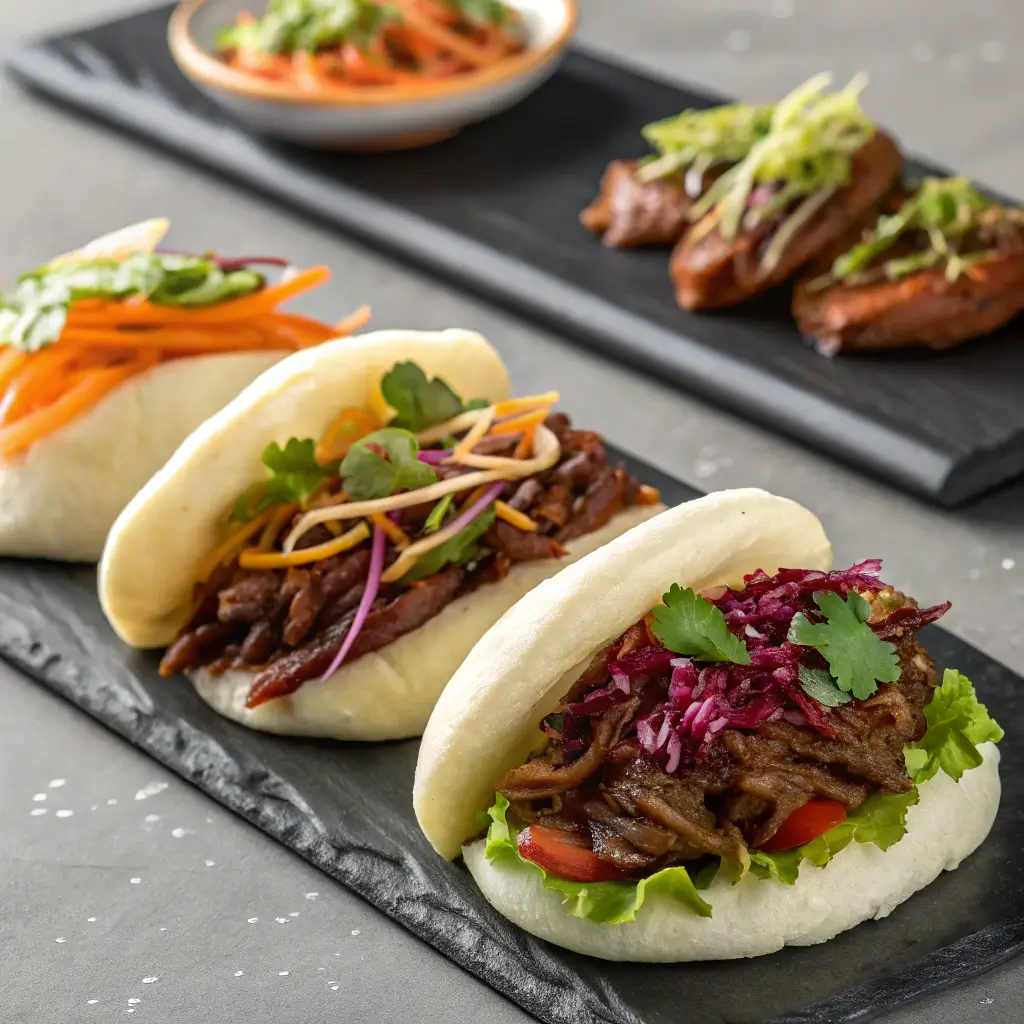
- Serve in lettuce cups with quick-pickled vegetables
- Use as filling for steamed bao buns
- Shred the beef and serve in corn tortillas with Asian slaw for fusion tacos
Complementary Beverages
Balance the rich flavors with:
- Jasmine tea, served hot
- Chinese lager beer
- A fruity red wine like Zinfandel or Malbec
Tips & Variations
Troubleshooting Common Issues
- Tough meat? It simply needs more time. Return it to low heat and continue cooking until tender.
- Sauce too salty? Add a peeled, quartered potato to absorb excess salt, or dilute with a little water and a pinch more sugar.
- Greasy sauce? Make the dish a day ahead, refrigerate overnight, and remove the solidified fat layer before reheating.
Recipe Variations
- Spicy version: Add dried chilies or a tablespoon of doubanjiang (fermented chili bean paste) for heat.
- Orange-infused: Add orange peel during braising for a citrus note common in certain Chinese regions.
- Five-spice variation: Replace individual spices with 1-2 teaspoons of Chinese five-spice powder.
If you’re looking for other easy beef ideas, especially for a slow cooker, explore our Ground Beef Crock Pot Recipes You’ll Absolutely Love.
Dietary Adaptations
- Lower sodium: Use low-sodium soy sauce and reduce the amount by 25%.
- Gluten-free: Substitute tamari for soy sauce and verify your wine is gluten-free.
Storage and Reheating
Chinese braised beef keeps well in the refrigerator for up to 3 days or can be frozen for up to 3 months. Reheat gently on the stovetop with a splash of water to maintain moisture.
Nutritional Information
Per serving (approximately 6 oz beef with sauce):
- Calories: 385
- Protein: 32g
- Carbohydrates: 7g
- Fat: 24g
- Sodium: 890mg
- Fiber: 0.5g
Serving size is based on 6 servings from 2 pounds of raw beef. (You can explore the nutritional details of beef further at the USDA FoodData Central.)
FAQs
What cut of beef is best for Chinese braised beef?
Beef finger meat is traditional, but chuck roast, boneless beef ribs, and beef shank all work beautifully. The key is choosing a well-marbled cut with some connective tissue that will break down during cooking.
Can I substitute ShaoHsing wine, and what should I use?
Dry sherry is the best substitute for ShaoHsing wine. In a pinch, dry white wine will work, though the flavor profile will be slightly different.
How long should I pressure cook Chinese braised beef?
For most cuts like chuck or finger meat, 35 minutes at high pressure with a 15-minute natural release yields tender results. Tougher cuts like beef shank or brisket benefit from 45 minutes or more.
Can I make this recipe without a pressure cooker?
Absolutely! The traditional braising method on the stovetop takes about 2 hours. You can also use a slow cooker on low for 7-8 hours.
How do I know when the beef is perfectly tender?
The beef should easily yield when pierced with a fork or chopstick. It shouldn’t fall apart completely, but should offer little resistance.
What’s the difference between light and dark soy sauce?
Light soy sauce is saltier and thinner, while dark soy sauce is less salty but adds color and a subtle sweetness. Using both creates balanced flavor and the perfect color.
How can I make the sauce thicker?
For a thicker sauce, either remove the meat and reduce the sauce over higher heat until it reaches your desired consistency, or create a slurry with 1 teaspoon cornstarch mixed with 1 tablespoon cold water and stir it into the simmering sauce.
Conclusion & Call to Action
Chinese braised beef represents the perfect balance of accessibility and extraordinary flavor. This dish demonstrates how traditional techniques can transform humble ingredients into something truly special that brings people together around the table. If you’re looking for another quick and satisfying beef meal, especially with noodles, don’t miss our Ground Beef Noodle Recipe: 5 Quick and Easy Ways to Make It.
Have you tried this recipe? We’d love to hear about your experience! Share your photos, substitutions, or serving ideas in the comments below.

